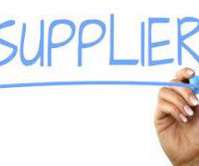The One Key Shift in Your Supply Chain and Procurement Strategies that can Drive Better Business Continuity and Resilience
Logistics Viewpoints
APRIL 6, 2023
Procurement and Supply Chain Management are essential functions that can help companies navigate these challenges, but they are often siloed and operate in separate departments. Their metrics are often misaligned as well – supply chain focuses on service and procurement focuses on the cost of acquiring materials and services.






















































Let's personalize your content